Art & Exhibitions
A New Exhibition in London Highlights the Effects of Conflict on Palestinian Culture
A year into the current war with Israel, the Palestine Museum U.S. is showcasing art being made in Gaza in London.
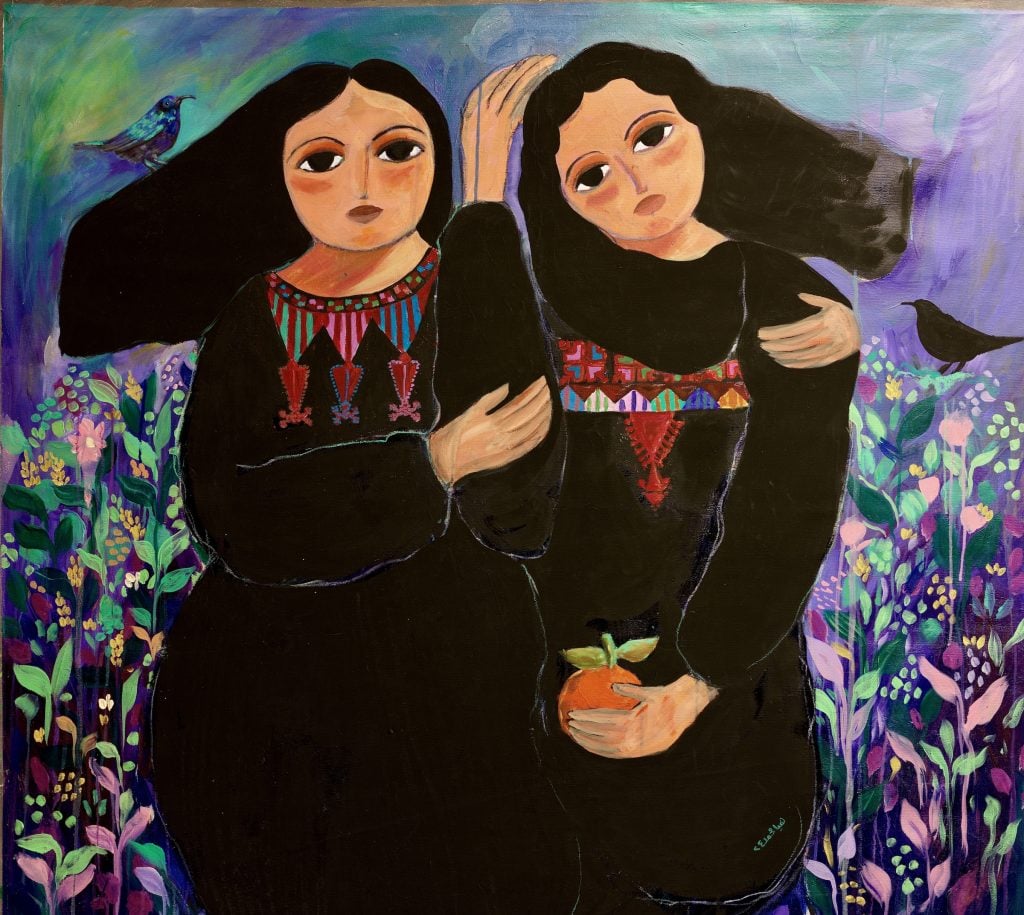
A year into the current war with Israel, the Palestine Museum U.S. is showcasing art being made in Gaza in London.

Sarah Cascone

A year into the current Israel-Gaza War, Palestine Museum U.S. in Woodbridge, Connecticut, is staging an exhibition in London featuring work from 25 Palestinian artists, including several currently trapped in Gaza.
“Art of Palestine: From the River to the Sea” is the second exhibition this year that the museum has held at P21 Gallery, which is dedicated to contemporary Arab art and culture. The show underscores how conflict has reshaped Palestinian culture over the course of decades.
For Palestinian artists who have lived in constant fear over the last year while facing continual displacement since Israel began its offensive after Hamas’s attack on October 7, 2023, showing their art “is extremely important,” Faisal Saleh, the museum’s founder and exhibition’s curator, told me. “Psychologically, it’s just evidence that they’re still alive, basically.”
One body of work in the show is titled just that, “I’m Still Alive” by Maisara Baroud. His daily sketches, done in ink on paper, are a continuing record of daily life in Gaza during the war.

Maisara Baroud, drawing from “Still Alive” (2024). Photo courtesy of the Palestine Museum U.S.
The show also features a selection of children’s drawings, but ones that were made in the wake of Operation Cast Lead, a deadly Israeli offensive in 2009. The drawings, made in art therapy class, depict airplanes dropping bombs and other acts of war. They are a reminder of the long-running nature of the war between Israel and Palestine and of the innocent children who are growing up witnessing unspeakable violence, facing death every day.
Because it is currently impossible to transport artwork out of Gaza, all of the pieces in the show from artists who have been unable to evacuate are represented by prints based on digital images, not originals.
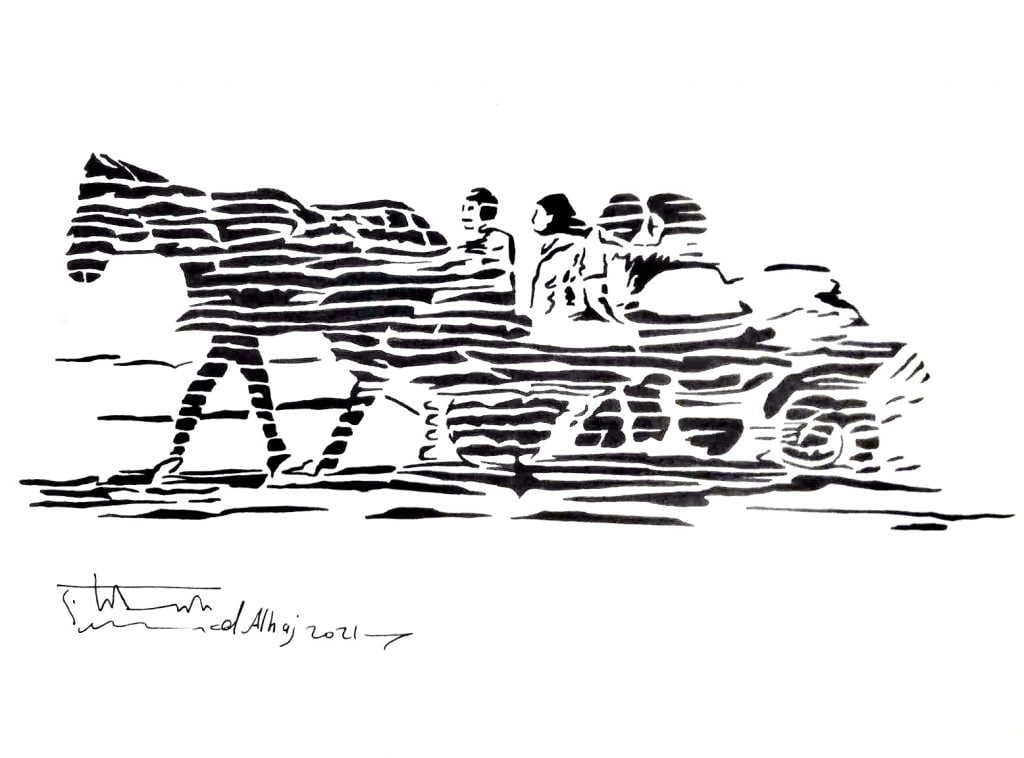
Mohammed Alhaj, Displacement, Gaza (2024). Courtesy of the Palestine Museum U.S.
From the start of the war, Saleh was originally in touch with eight artists in Gaza, two of whom were able to escape before the closing of the Rafah crossing. Internet outages make communications unreliable, and the quality of calls can vary widely, but Salah tries to stay in regular contact with as many of them as he can.
The situation on the ground is dire, both from a humanitarian perspective, and a cultural one. Hamas’s attack on Israel on October 7 killed 1,200 people and saw 240 taken hostage. Since then, Israel’s counter-offensive has killed more than 41,870 people in Gaza, among them 16,765 children, according to the Gaza Ministry of Health, which is run by Hamas.
“Most artists in Gaza lost all their artwork. It got destroyed with the bombings,” Saleh said. “The Palestinian art institutions, a cultural institutions in Gaza, they’re all destroyed. Art museums, libraries, bookstores that sell old books, anything that has to do with culture and art in Gaza, Israel deliberately destroyed.”
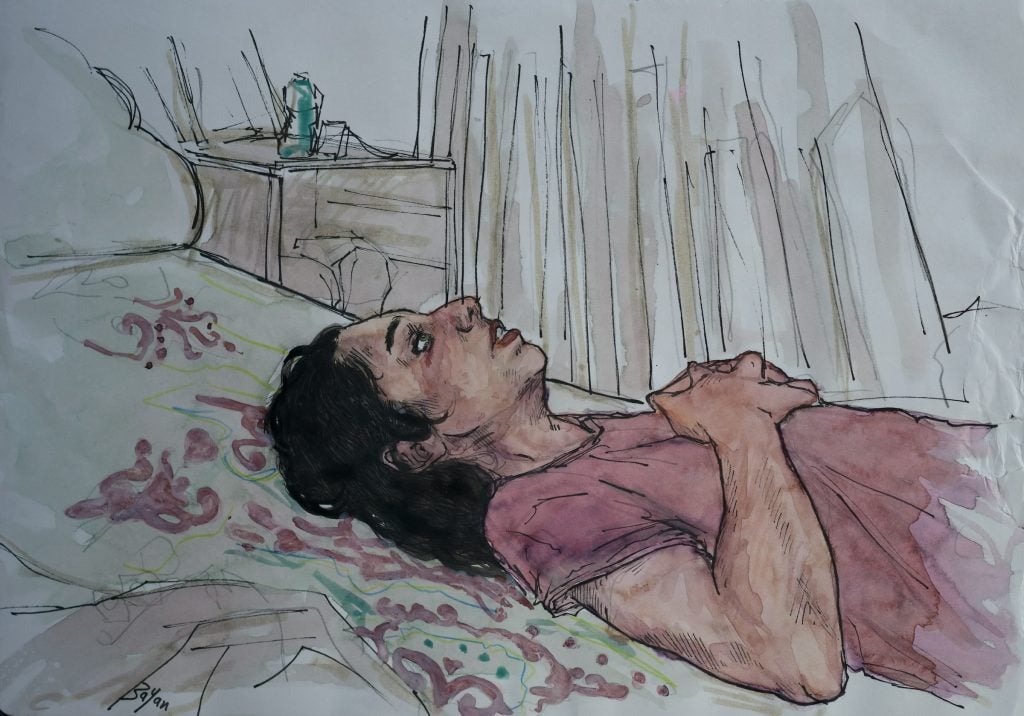
Bayan Abu, Nahleh (2014).
Saleh was born in the West Bank in 1951, just a few years after Israeli forces took over his family’s village in 1948, forcing them to leave their home. He founded the museum in 2018 as a way to tell the story of the Palestinian people, retiring from his HR company in 2023 to focus full time on the institution.
He has found it a challenge to get media coverage for the museum’s programming—and its only gotten more difficult over the last year. In 2022, the Venice Biennale selected a show from the Palestine Museum U.S. as one of its official collateral events. This year, its submission did not make the cut. (It still went ahead as planned, and is on view through November 24.)
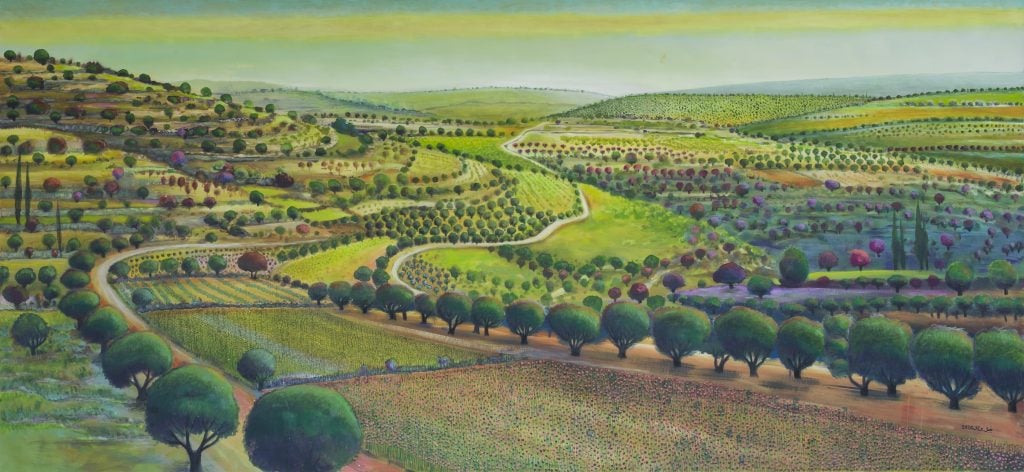
Nabil Anani, In Pursuit of Utopia #7 (2020). Photo courtesy Nabil Anani.
“There is the physical destruction of artwork and architecture.… The more subtle danger is the attempt by Israel to erase the Palestinian culture. And this eraser is taking place through censorship,” Saleh said, citing the cancellation of a planned exhibition by Palestinian artist Samia Halaby and the decision of the Noguchi Museum in Queens to ban its employees from wearing keffiyehs.
As we spoke, I was shocked to see that Microsoft Teams, which was live transcribing our phone call, censored the very word “keffiyeh,” as if it were an expletive and not just a traditional Middle Eastern garment.
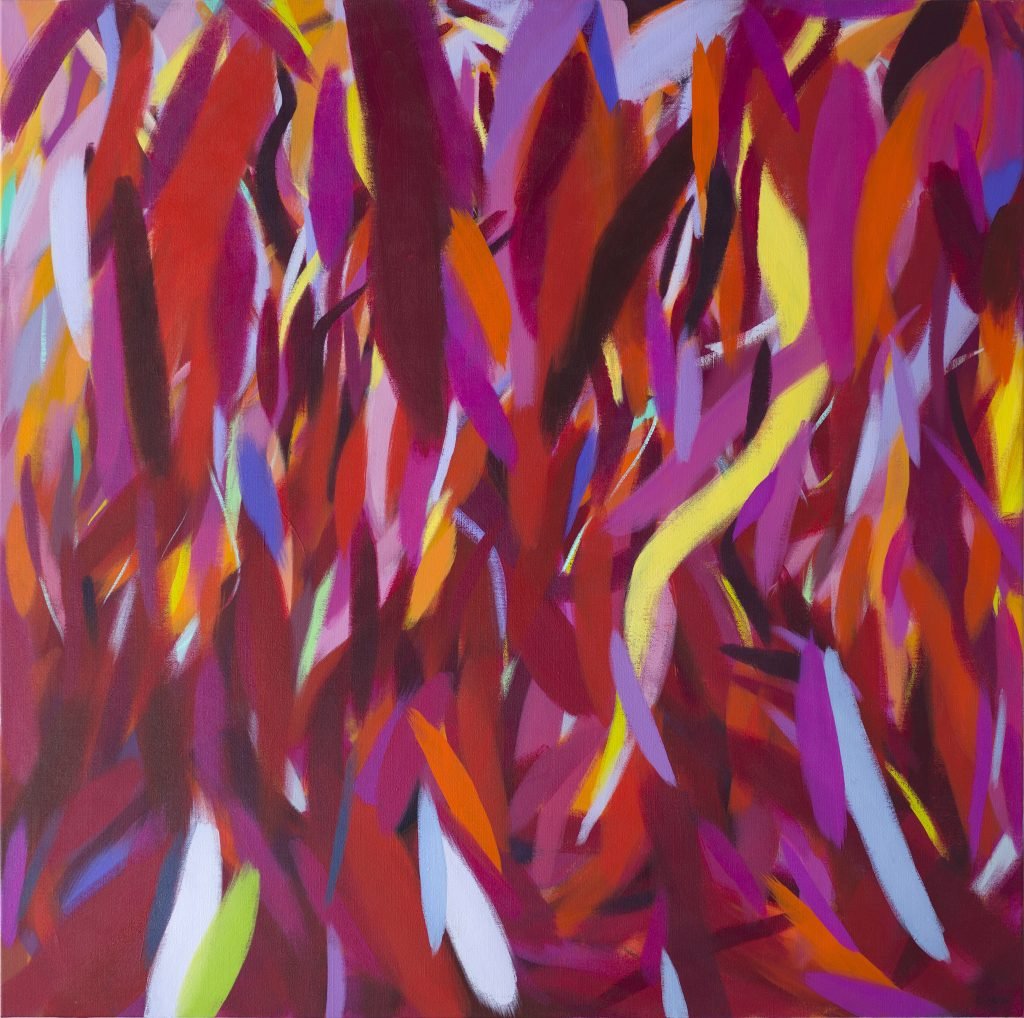
Samia Halaby, Venetian Red (2021). Photo courtesy of Samia Halaby.
Halaby, who is perhaps Palestine’s most famous living artist at 87, is one of the artists included in the exhibition, with one of her abstract canvases. But the show also features artists who are much lesser known, and who are addressing the war in Gaza in a much more direct way.
Two works are by Khalil Khalidy, a doctor and artist who had the chance to escape Gaza, but chose to remain, treating the sick and wounded.
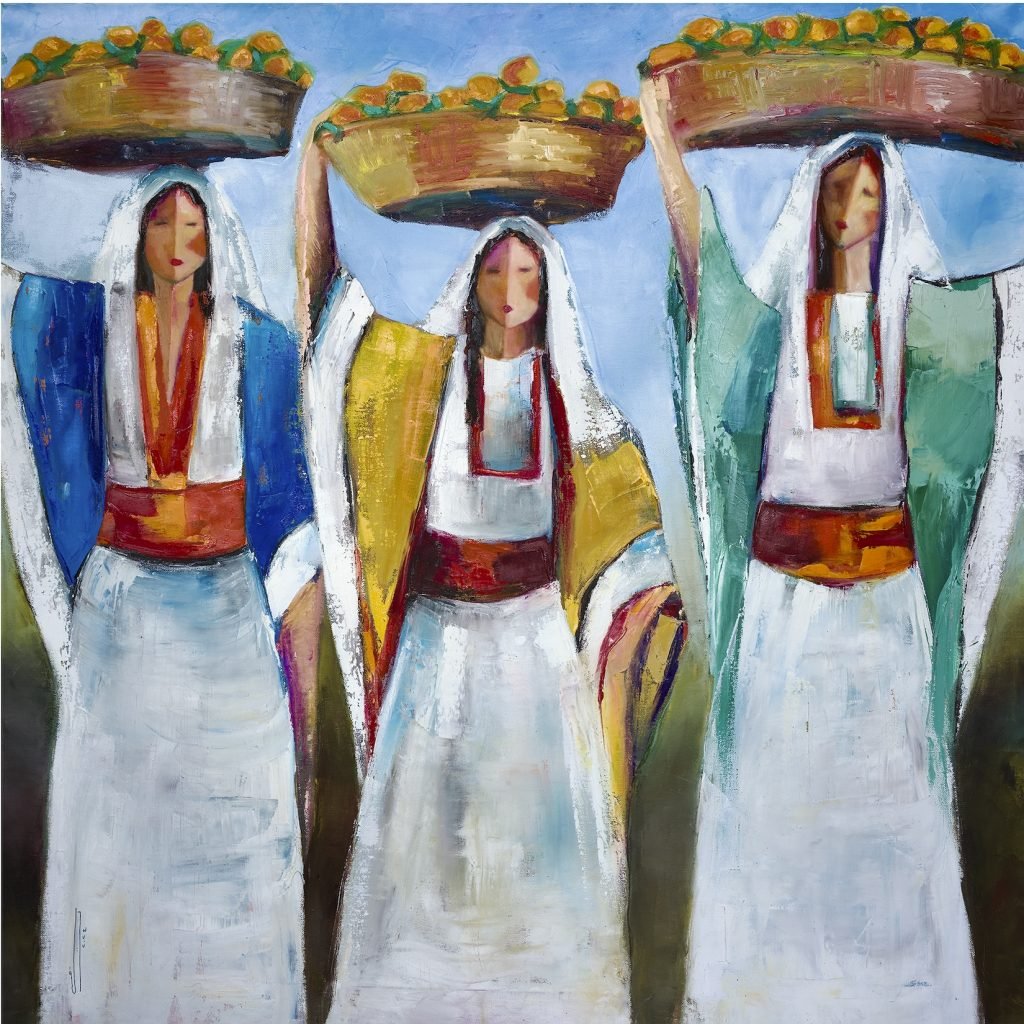
Tala Abu Nuwar, Three Women with Oranges (2024).
One looks at first like a delicate Renaissance red chalk drawing of a youthful angel. Khalidy mixed the blood of an anonymous Palestinian boy who died on the hospital floor after a bombing, paying tribute to one of the war’s many unknown victims. The second shows a young girl crying as she eats a popsicle—a reference to the ice cream trucks pressed into service as mobile morgues because of the ever-growing death toll in Gaza.
Both include a QR code that links to the doctor’s Instagram posts in which he explains the dark inspiration for the beautiful paintings.
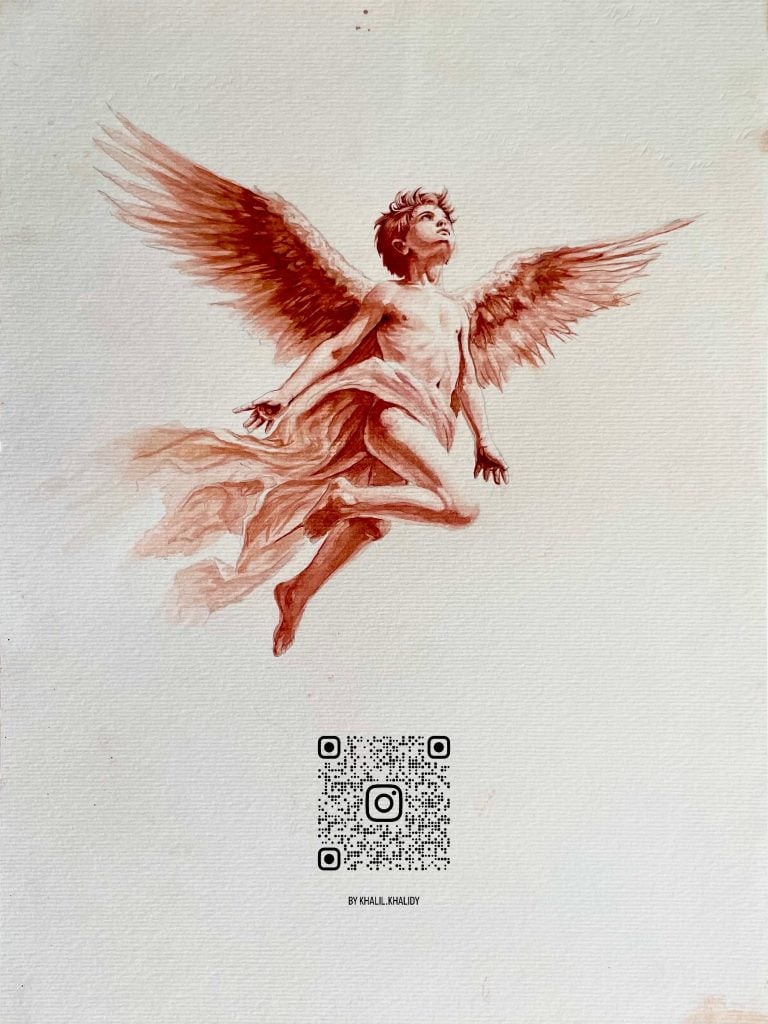
Khalil Khalidy did this painting of a boy angel of using paint mixed with the blood of a Palestinian boy who died in a bombing. Photo courtesy of the Palestine Museum U.S. Photo courtesy of the Palestine Museum U.S.
“We’re not showing gory things,” Saleh said. “It’s very subtle and the way art is supposed to be. It’s respectful and thought provoking and it’s getting some ideas across about what’s going on here.”
The exhibition is also showcasing nine selections from Palestinian History Tapestry, a project of 100 pieces of embroidery by Palestinian women telling the story of the nation’s cultural history.
“Each one of them is in beautiful colors, reflecting work of hundreds and hundreds of hours that was done by Palestinian women in refugee camps in Lebanon and Jordan, the West Bank, Gaza, and other places,” Saleh said of the project, which recently joined the museum collection.
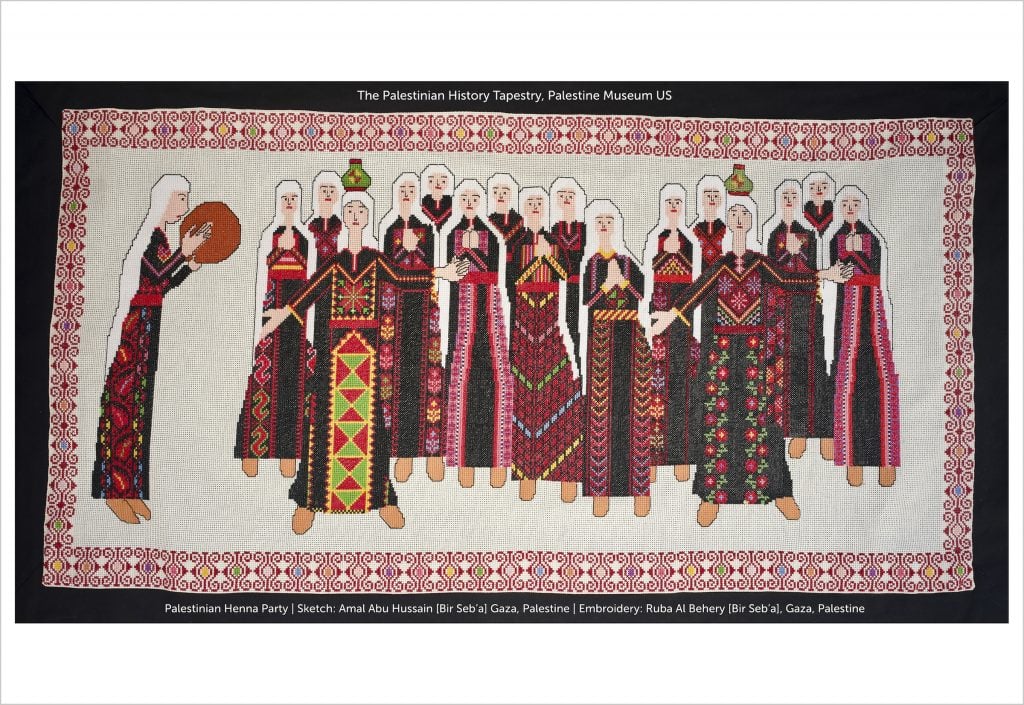
Palestine History Tapestry, Henna Party, Embroidery. Photo courtesy of the Palestine Museum U.S.
The exhibition draws its title from the controversial slogan calling for freedom for Palestinians in the geographic area between Jordan River and the Mediterranean Sea—historically the state of Palestine, but now all part of Israel. But for Saleh, the title is meant just to be factual.
“There are Palestinians who live from the river to the sea. They live in Haifa, in Jaffa and Anata, and all these places in Israel proper—and some, you know, in the West Bank under occupation,” he said. “We’re showing the art of these people. And they happen to live from the river to the sea. We’re not even saying that they should be free. We’re just saying this is their art.”
“Art of Palestine: From the River to the Sea” is on view at P21 Gallery, 21-27 Chalton Street, Somers Town, London, September 27–December 21, 2024.
“Foreigners in Their Homeland” is on view at Palazzo Mora, Cannaregio, 2978, 30123, Venice on April 20–November 24, 2024.